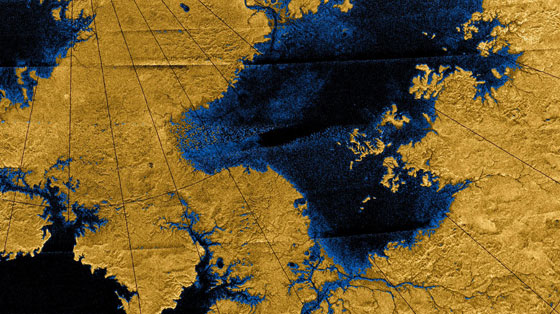In 2004, radar images from the Cassini-Huygens spacecraft penetrated the atmosphere of Titan and revealed an icy terrain carved out over millions of years by rivers of liquid methane, similar to how rivers of water have etched into Earth's rocky continents but that opened up the mystery about its geologic past.
"We don't have many impact craters on Earth," says Taylor Perron, Assistant Professor of Geology at MIT. "People flock to them because they're so few, and one explanation is that Earth's continents are always eroding or being covered with sediment. That may be the case on Titan, too."
Plate tectonics, erupting volcanoes, advancing glaciers and river networks have all reshaped Earth's surface over billions of years. On Titan, similar processes — tectonic upheaval, icy lava eruptions, erosion and sedimentation by rivers — may be at work.
But identifying which of these geological phenomena may have modified Titan's surface is a significant challenge. Images generated by the Cassini spacecraft, similar to aerial photos but with much coarser resolution, are flat, depicting terrain from a bird's-eye perspective, with no information about a landform's elevation or depth.

Cassini images show river networks draining into lakes in Titan's north polar region. Credit: NASA/JPL/USGS
Perron and MIT graduate student Benjamin Black set out to determine the extent to which river networks may have renewed Titan's surface. The team analyzed images taken from Cassini-Huygens, and mapped 52 prominent river networks from four regions on Titan. The researchers compared the images with a model of river network evolution developed by Perron. This model depicts the evolution of a river over time, given variables such as the strength of the underlying material and the rate of flow through the river channels. As a river erodes slowly through the ice, it transforms from a long, spindly thread into a dense, treelike network of tributaries.
Black compared his measurements of Titan's river networks with the model, and found the moon's rivers most resembled the early stages of a typical terrestrial river's evolution. The observations indicate that rivers in some regions have caused very little erosion, and hence very little modification of Titan's surface.
"They're more on the long and spindly side," Black says. "You do see some full and branching networks, and that's tantalizing, because if we get more data, it will be interesting to know whether there really are regional differences."
Going a step further, Black compared Titan's images with recently renewed landscapes on Earth, including volcanic terrain on the island of Kauai and recently glaciated landscapes in North America. The river networks in those locations are similar in form to those on Titan, suggesting that geologic processes may have reshaped the moon's icy surface in the recent past.
"It's a weirdly Earth-like place, even with this exotic combination of materials and temperatures," Perron says. "And so you can still say something definitive about the erosion. It's the same physics."





Comments